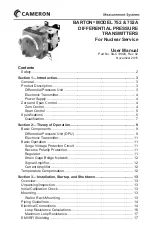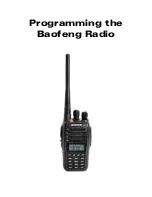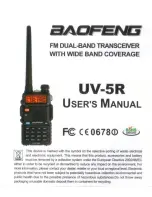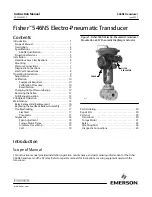
11
Model 752 and 752A Differential Pressure Transmitters
Section 2
Electronic Transmitter
The DPU senses the difference in pressure applied across the bellows unit
assembly and the electronic circuit converts to a 4-20 mA or 10-50 mA output
signal. The pressure causes a linear motion of the bellows which is mechani-
cally transmitted to the strain gages by the strain gage beam. Motion of the
end of the strain gage beam applies tension to one gage and compression on
the other. The gage in tension increases in resistance, while the one under
compression decreases in resistance. The two gages are connected to form
two active arms of a bridge circuit.
Basic Operation
The electronic transmitter is basically a loop current regulating device, where
loop current is controlled by an input of mechanical force or motion. The
) shows the relationships of the various
stages and the main flow of the electrical currents. As shown, the transmitter,
power supply, and load (line plus receiving device) are connected in series.
The current from the power supply enters the transmitter, passes through the
reverse polarity protecting diode, then divides into two separate paths. The
main current flows through the current amplifier stage and returns to the loop.
The remainder of the current passes through the electronic regulator where it
divides into two paths, through the bridge circuit and the voltage amplifier.
The current is then returned to the loop. The total loop current flows through
the load and back to the power supply.
Surge Voltage Protection Circuit
Two gas discharge tubes and a Zener diode are placed in the input circuit to
prevent transient voltages from entering the transmitter circuit.
Reverse Polarity Protection
Reverse input polarity protection is provided by the forward-conducting
diode. In the event the polarity of the input is reversed, the diode blocks the
input and prevents the reversed input power from damaging the electronic
circuit components. The diode can accommodate a maximum of 80 Volts
without damage.
Regulator
This stage of the circuit regulates that portion of the loop current which is not
calibrated at the current amplifier stage, and provides stabilized voltage for
bridge excitation and power for the signal amplifier.












































